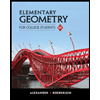3.11 (B). A beam, 12 m long, is to be simply supported at 2m from each end and to carry a U.d.l of 30kN/m together with a 30 KN point load at the right-hand end. For ease of transportation the beam is to be jointed in two places, one joint being Situated 5 m from the left-hand end. What load (to the nearest KN) must be applied to the left-hand end to ensure that there is no B.M. at the joint (i.e. the joint is to be a point of contraflexure)? What will then be the best position on the beam for the other joint? Determine the position and magnitude of the maximum B.M. present on the beam. [114 KN, 1.6 m from r.h. reaction; 4.7 m from 1.h. reaction; 43.35 KN m.]
3.11 (B). A beam, 12 m long, is to be simply supported at 2m from each end and to carry a U.d.l of 30kN/m together with a 30 KN point load at the right-hand end. For ease of transportation the beam is to be jointed in two places, one joint being Situated 5 m from the left-hand end. What load (to the nearest KN) must be applied to the left-hand end to ensure that there is no B.M. at the joint (i.e. the joint is to be a point of contraflexure)? What will then be the best position on the beam for the other joint? Determine the position and magnitude of the maximum B.M. present on the beam. [114 KN, 1.6 m from r.h. reaction; 4.7 m from 1.h. reaction; 43.35 KN m.]
Elementary Geometry for College Students
6th Edition
ISBN:9781285195698
Author:Daniel C. Alexander, Geralyn M. Koeberlein
Publisher:Daniel C. Alexander, Geralyn M. Koeberlein
Chapter8: Areas Of Polygons And Circles
Section8.5: More Area Relationships In The Circle
Problem 42E: A goat is tethered to a barn by a 12-ft chain. If the chain is connected to the barn at a point 6 ft...
Related questions
Question
![3.11 (B). A beam, 12 m long, is to be simply supported at 2m from each end and to
carry a U.d.l of 30kN/m together with a 30 KN point load at the right-hand end.
For ease of transportation the beam is to be jointed in two places, one joint being
Situated 5 m from the left-hand end. What load (to the nearest KN) must be
applied to the left-hand end to ensure that there is no B.M. at the joint (i.e. the
joint is to be a point of contraflexure)? What will then be the best position on the
beam for the other joint? Determine the position and magnitude of the maximum
B.M. present on the beam. [114 KN, 1.6 m from r.h. reaction; 4.7 m from 1.h. reaction;
43.35 KN m.]](/v2/_next/image?url=https%3A%2F%2Fcontent.bartleby.com%2Fqna-images%2Fquestion%2F46eaf275-e136-4c8d-aaca-23d8a1e7e376%2F82227c06-1598-4dfb-b285-3457efc343bd%2F4rfdzed_processed.jpeg&w=3840&q=75)
Transcribed Image Text:3.11 (B). A beam, 12 m long, is to be simply supported at 2m from each end and to
carry a U.d.l of 30kN/m together with a 30 KN point load at the right-hand end.
For ease of transportation the beam is to be jointed in two places, one joint being
Situated 5 m from the left-hand end. What load (to the nearest KN) must be
applied to the left-hand end to ensure that there is no B.M. at the joint (i.e. the
joint is to be a point of contraflexure)? What will then be the best position on the
beam for the other joint? Determine the position and magnitude of the maximum
B.M. present on the beam. [114 KN, 1.6 m from r.h. reaction; 4.7 m from 1.h. reaction;
43.35 KN m.]
Expert Solution
This question has been solved!
Explore an expertly crafted, step-by-step solution for a thorough understanding of key concepts.
Step by step
Solved in 2 steps with 1 images

Recommended textbooks for you

Elementary Geometry for College Students
Geometry
ISBN:
9781285195698
Author:
Daniel C. Alexander, Geralyn M. Koeberlein
Publisher:
Cengage Learning

Trigonometry (MindTap Course List)
Trigonometry
ISBN:
9781337278461
Author:
Ron Larson
Publisher:
Cengage Learning

Algebra: Structure And Method, Book 1
Algebra
ISBN:
9780395977224
Author:
Richard G. Brown, Mary P. Dolciani, Robert H. Sorgenfrey, William L. Cole
Publisher:
McDougal Littell

Elementary Geometry for College Students
Geometry
ISBN:
9781285195698
Author:
Daniel C. Alexander, Geralyn M. Koeberlein
Publisher:
Cengage Learning

Trigonometry (MindTap Course List)
Trigonometry
ISBN:
9781337278461
Author:
Ron Larson
Publisher:
Cengage Learning

Algebra: Structure And Method, Book 1
Algebra
ISBN:
9780395977224
Author:
Richard G. Brown, Mary P. Dolciani, Robert H. Sorgenfrey, William L. Cole
Publisher:
McDougal Littell

Mathematics For Machine Technology
Advanced Math
ISBN:
9781337798310
Author:
Peterson, John.
Publisher:
Cengage Learning,

Elementary Geometry For College Students, 7e
Geometry
ISBN:
9781337614085
Author:
Alexander, Daniel C.; Koeberlein, Geralyn M.
Publisher:
Cengage,